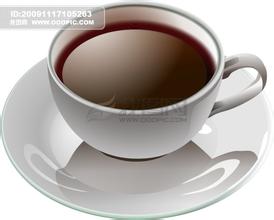Honey-like sweet aroma Ethiopian coffee flavor taste manor characteristics of boutique coffee
In September 1974, a group of young and strong officers formed the "Coordination Committee of the Army, Police and Local Forces" (that is, DERGUE, meaning SHADOW, and later generally referred to the junta and Mengistu regime) to launch a military coup, overthrew the Haier Selassie government, and announced the end of monarchy and the establishment of a "interim junta." In November, the "interim military government" was changed to "interim military Administrative Council". In December, the interim military Administrative Council declared Ethiopia a "socialist country" with the nationalization of land, financial and financial institutions and industry in July 1991, with the participation of more than 20 political and ethnic organizations. The meeting adopted the Transitional Charter and elected an 87-member House of Representatives, with EGF Chairman Meles Zenawi as President and President of the Transitional Government. A transitional government was established. Eritrea (formerly Eritrea Province of Ethiopia) became a sovereign country in Ethiopia through a referendum under the supervision of the international community on May 24, 1993. The mountainous plateau in Ethiopia is dominated by the mountain plateau, with a large subordinate to the Ethiopian plateau. The Midwest is the main body of the plateau, accounting for 2x3 of the whole territory. The Great Rift Valley of East Africa runs through the whole territory, with an average elevation of nearly 3000 meters, known as the "roof of Africa". The terrain around the plateau is gradually declining. The Darol depression in the north fell to 113 meters below sea level, the lowest point in the country. The coast of the Red Sea is a narrow banded plain. Deserts and semi-deserts in the north, south and north-east account for about 25% of the country's area. Dashan Peak in the Ximen Mountains is 4623 meters above sea level. It is the highest peak in Ethiopia. Ethiopia is rectangular, with a ratio of length to width of 3:2. From top to bottom, it is composed of green, yellow and red parallel equal horizontal rectangles, with the national emblem in the middle of the flag. Since the end of the 19th century, Ethiopia began to use the green, yellow and red cross-striped national flag. In modern history, Ethiopia is the first African country to join the forest of free nations. [8]
In the fifties and sixties of this century, many African countries became independent one after another and adopted green, yellow and red as the colors of the national flag, so they were called "pan-African colors". Ethiopia is one of the ancient countries in Africa, with a long history of more than 3000 years, giving green, yellow and red colors deeper roots in this land. Historically, they are closely related to the liturgy of the Coptic church, and are worshipped as the symbol of the trinity of the Father, the son and the Holy Spirit, reflecting the three virtues of loyalty, hope and kindness advocated by human freedom. These three colors also represent three regions of Ethiopia: Tikleh (red), Amhara (yellow) and Theo (green). Green represents fertile land, mild climate and rich plant resources, but also symbolizes hope for the future; yellow symbolizes peace and fraternity, as well as the people's determination to build the country; red symbolizes that the people are ready to shed blood and sacrifice to defend the motherland.
Yega Xuefei's coffee trees were planted by monks in Europe and later transferred to farmers or cooperatives. Yega Xuefei is actually constructed by the surrounding coffee communities or cooperatives, including: Hafusha, Hama, Biloya.
These mountain villages are foggy, like spring all year round, with a gentle breeze in summer, cool but not hot, rain but not damp, and no cold damage in winter, giving birth to a unique regional flavor of citrus and flowers. Coffee trees are mostly planted in farmers' own backyards or mixed with other crops in the fields. Yejasuefei is a small town with an elevation of 700-21000 meters, which is synonymous with Ethiopian boutique coffee. It has been a wetland since ancient times. The ancient saying "Yirga" means "settle down" and "Cheffe" means "wetland". The mode of production and flavor of coffee here are so outstanding that Ethiopian coffee farmers compete to be proud of the flavor of their own coffee. To become the most famous coffee producing area in Africa, Ethiopia's Yirgacheffe coffee is delicate, delicate and sweet. As the hometown of coffee, thousands of years of planting history and processing tradition in Ethiopia have created high-quality washed Arabica beans. Light baking has unique sweet aromas of lemon, flowers and honey, soft acidity and citrus flavors, fresh and bright on the palate. Without milk or sugar, let the rich texture and unique soft scent of flowers brush through your taste buds, leaving an endless aftertaste. Yega Xuefei's coffee trees were planted by monastic monks in Europe and later transferred to farmers or cooperatives. Yega Xuefei is actually constructed by the surrounding coffee communities or cooperatives, including: Hafusha, Hama, Biloya.
These mountain villages are foggy, like spring all year round, with a gentle breeze in summer, cool but not hot, rain but not damp, and no cold damage in winter, giving birth to a unique regional flavor of citrus and flowers. Coffee trees are mostly planted in farmers' own backyards or mixed with other crops in the fields. Yejasuefei is a small town with an elevation of 700-21000 meters, which is synonymous with Ethiopian boutique coffee. It has been a wetland since ancient times. The ancient saying "Yirga" means "settle down" and "Cheffe" means "wetland". The mode of production and flavor of coffee here are so outstanding that Ethiopian coffee farmers compete to be proud of the flavor of their own coffee. To become the most famous coffee producing area in Africa, Ethiopia's Yirgacheffe coffee is delicate, delicate and sweet. As the hometown of coffee, thousands of years of planting history and processing tradition in Ethiopia have created high-quality washed Arabica beans. Light baking has unique sweet aromas of lemon, flowers and honey, soft acidity and citrus flavors, fresh and bright on the palate. No milk or sugar, let the rich texture and unique soft flower scent brush your taste buds, leaving an endless aftertaste

Important Notice :
前街咖啡 FrontStreet Coffee has moved to new addredd:
FrontStreet Coffee Address: 315,Donghua East Road,GuangZhou
Tel:020 38364473
- Prev

Elegant flavor of Jamaica Blue Mountain Coffee Flavor Taste Estate Features
In 1670, Spain formally ceded Jamaica and other places to Britain under the Treaty of Madrid. The British immediately used the island of Jamaica as a base for their piracy. Before Loire was destroyed by an earthquake in 1692, it became the capital of Caribbean pirates. After that, the British built Kingston City and gradually built it into the central city of Jamaica. After 1865,
- Next

Introduction to the characteristics of Milky and Sweet Panamanian Rosa Coffee Flavor Manor
The Panamanian isthmus used to be Chibucha, Caribbean and other Indian departments. In 1501, Panama was colonized by Spain and belonged to the Governor of New Granada. [5] in 1821, Panama became independent and became part of the Republic of Greater Columbia. [5] in 1830, after the dissolution of the Republic of Great Columbia, it became a province of the Republic of New Granada (later known as Colombia) in May 1989.
Related
- Detailed explanation of Jadeite planting Land in Panamanian Jadeite Manor introduction to the grading system of Jadeite competitive bidding, Red bid, Green bid and Rose Summer
- Story of Coffee planting in Brenka region of Costa Rica Stonehenge Manor anaerobic heavy honey treatment of flavor mouth
- What's on the barrel of Blue Mountain Coffee beans?
- Can American coffee also pull flowers? How to use hot American style to pull out a good-looking pattern?
- Can you make a cold extract with coffee beans? What is the right proportion for cold-extracted coffee formula?
- Indonesian PWN Gold Mandrine Coffee Origin Features Flavor How to Chong? Mandolin coffee is American.
- A brief introduction to the flavor characteristics of Brazilian yellow bourbon coffee beans
- What is the effect of different water quality on the flavor of cold-extracted coffee? What kind of water is best for brewing coffee?
- Why do you think of Rose Summer whenever you mention Panamanian coffee?
- Introduction to the characteristics of authentic blue mountain coffee bean producing areas? What is the CIB Coffee Authority in Jamaica?

